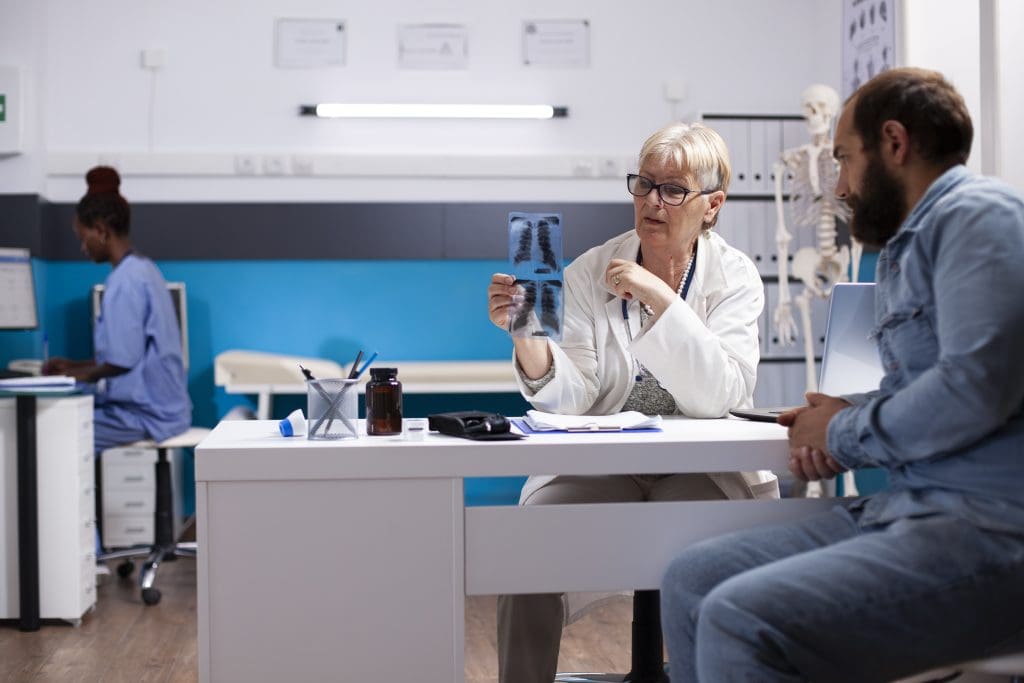Last Updated on November 26, 2025 by Bilal Hasdemir
Colon cancer is a common cancer worldwide. Regular screening can greatly lower death rates. It’s important to find the best screening method. We look at different screening options for colon cancer. This includes stool-based tests and other diagnostic methods. We aim to find the best test for early detection of colon cancer.
Key Takeaways
- Regular colon cancer screening can significantly reduce mortality rates.
- Various screening methods are available, including stool-based tests.
- The most effective test for colon cancer detection is key for early treatment.
- Colonoscopy is considered a gold standard for colon cancer screening.
- Early detection is key to preventing and treating colon cancer effectively.
Understanding Colon Cancer and the Need for Screening
It’s important to know about colon cancer to find the right screening methods. Colon cancer, also known as colorectal cancer, is a big health issue worldwide. We’ll look at what colon cancer is, its risk factors, and warning signs. This will help us see why we need good screening methods.

What is Colon Cancer?
Colon cancer starts in the colon or rectum. It often begins as a polyp, a growth on the inner lining. Over time, this polyp can turn into cancer. Most colon cancers are adenocarcinomas, coming from the glandular cells in the colon and rectum.
Risk Factors and Warning Signs
Many things can raise your risk of getting colon cancer. Age is a big one, with most cases happening after 50. Family history and certain genetic syndromes also play a part. Lifestyle choices like eating too much red meat, not being active, being overweight, smoking, and drinking a lot of alcohol also matter.
It’s key to know the warning signs of colon cancer to catch it early. Common signs include:
- Blood in the stool or black, tarry stools
- Changes in bowel habits, such as diarrhea or constipation
- Abdominal pain or cramping
- Weakness or fatigue
- Unexplained weight loss
| Risk Factor | Description |
| Age | Most cases occur in individuals over 50 |
| Family History | Having a first-degree relative with colon cancer or polyps |
| Lifestyle Factors | Diet high in red and processed meats, lack of physical activity, obesity, smoking, and heavy alcohol consumption |
| Genetic Syndromes | Conditions such as Lynch syndrome and familial adenomatous polyposis (FAP) |
Knowing these risk factors and warning signs is key. It helps us choose the best screening method. This can help prevent colon cancer by finding and removing polyps early.
The Importance of Early Detection
Early detection is key to treating colon cancer effectively. Regular screening is essential. It’s important to know how early detection can greatly improve patient outcomes.
Survival Rates by Stage
Colon cancer survival rates change a lot based on when it’s found. Early detection means a much higher five-year survival rate compared to later stages.
| Stage at Diagnosis | Five-Year Survival Rate |
| Localized | 90% |
| Regional | 71% |
| Distant | 14% |
The table shows that early detection can lead to a 90% five-year survival rate for localized colon cancer. This highlights the critical role of screening.
Screening’s Impact on Mortality Rates
Regular screening not only finds cancer early but also cuts down on deaths. It identifies and removes polyps that could turn cancerous. Studies show that screening can lower colon cancer death rates by up to 30%. Understanding how screening affects mortality rates shows its life-saving value. We suggest talking to a healthcare provider about screening options to find what’s best for you.
Colonoscopy:
Colonoscopy is the top choice for checking the colon. It lets doctors see inside the colon for polyps, cancer, and other issues.
How a Colonoscopy Works
A colonoscopy uses a flexible tube with a camera and light. This tube, called a colonoscope, goes through the rectum and into the colon. Doctors can see any problems on a video monitor.
Preparation is key for a good colonoscopy. Patients must follow a special diet and bowel prep to clean the colon before the test.
Benefits and Accuracy Rates
Colonoscopy is great at finding and removing polyps that could turn into cancer. It’s very accurate, with high sensitivity and specificity rates.
| Screening Method | Sensitivity | Specificity |
| Colonoscopy | High | High |
| FOBT | Moderate | High |
| FIT | Moderate | High |
The table shows how colonoscopy compares to other tests like FOBT and FIT in terms of accuracy.
Limitations and Risks
Colonoscopy is generally safe but can have risks like bleeding, perforation, and reactions to sedation.
It’s important for patients to talk to their doctor about their risks and any worries before a colonoscopy.
Colonoscopy is key for catching colon cancer early. Knowing its benefits and risks helps patients choose the right screening.
Stool-Based Tests for Colon Cancer Detection
Stool-based tests are a non-invasive way to screen for colon cancer. They look for changes in stool samples. These tests are easier than colonoscopies, making more people get screened.
Fecal Occult Blood Test (FOBT)
The Fecal Occult Blood Test (FOBT) finds hidden blood in stool, a sign of colon cancer. It’s a simple test done at home with a stool sample. Labs analyze it. FOBT is suggested yearly for those at average risk.
Fecal Immunochemical Test (FIT)
The Fecal Immunochemical Test (FIT) also finds blood in stool but is more accurate. It’s also done at home with one stool sample. It’s easier for patients than FOBT and is also yearly.
Stool DNA Test (Cologuard)
The Stool DNA Test, or Cologuard, is a more advanced test. It finds blood and abnormal DNA linked to colon cancer. Cologuard is done every three years if results are normal. It’s great for catching cancer and polyps early.
Stool-based tests are a valuable tool in finding colon cancer early. “Stool-based tests can greatly reduce colon cancer deaths by getting more people to screen,” says a top gastroenterologist. While not a full replacement for colonoscopies, they’re a good option for those at average risk.
CT Colonography (Virtual Colonoscopy)
Virtual colonoscopy, or CT colonography, is a detailed imaging test of the colon. It’s a non-invasive way to see the colon, unlike a traditional colonoscopy.
Procedure and Technology
The CT colonography uses a CT scanner to take detailed images of the colon. Prior to the scan, patients undergo bowel preparation to clean the colon. Air or carbon dioxide is used to inflate the colon for clearer images.
The CT scanner takes images from different angles. These images are then turned into a 3D image of the colon. Advanced software helps to find polyps and other issues in these images.
Advantages and Limitations
CT colonography is non-invasive, which makes it more appealing to some patients. It requires less preparation and can be done without sedation. This reduces the risk of complications from anesthesia.
But, it’s not as good at finding small polyps as traditional colonoscopy. If a polyp is found, a traditional colonoscopy is needed for removal. There’s also a small risk of radiation exposure.
Despite its limitations, CT colonography is a valuable tool against colon cancer. It’s a good option for those who can’t or won’t have traditional colonoscopy. As technology improves, we can expect better accuracy and safety in this screening method.
Flexible Sigmoidoscopy as a Screening Option
Flexible sigmoidoscopy looks at the lower colon for polyps and cancer. It’s not as thorough as a colonoscopy but is a good choice for colon cancer screening.
Procedure Details
This method uses a flexible tube with a camera to see the sigmoid colon and part f the descending colon. The whole process takes about 10 to 20 minutes and doesn’t need sedation. But, you might feel some discomfort.Before starting, you might need to follow a bowel prep. This usually means enemas to clean the lower colon. Air is also used to make the colon easier to see.
Effectiveness and Limitations
Flexible sigmoidoscopy is good at finding polyps and cancer in the lower colon. It can help prevent colorectal cancer by removing precancerous polyps. But, it can’t check the whole colon.
Its biggest drawback is it only looks at the lower colon. It might miss polyps or cancer in the upper colon. So, it’s not for everyone, like those at high risk or with a family history of colon cancer.
Despite its limits, flexible sigmoidoscopy is a useful screening tool. It’s less invasive and has fewer risks than colonoscopy, making it good for those at average risk.
Blood Tests for Colon Cancer Screening
Scientists are looking for new ways to find colon cancer early without invasive tests. Blood tests are becoming a key area of research. They might help find colon cancer before symptoms appear.
Current Blood-Based Screening Options
Several blood tests are being tested to find colon cancer biomarkers. These tests look for proteins, DNA, or other molecules in the blood. Early results from clinical trials are encouraging.
Blood tests might be easier for patients than colonoscopies. They are less invasive. This could make more people get screened.
Test Type | Description | Status |
| Floating Marker Tests | Detect specific DNA or proteins in the blood associated with colon cancer | In clinical trials |
| Epigenetic Tests | Identify epigenetic changes in DNA related to colon cancer | Emerging technology |
| Proteomic Tests | Analyze protein profiles to detect colon cancer biomarkers | Under research |
Emerging Blood Test Technologies
New technologies are making blood tests for colon cancer better. They use advanced genomic and proteomic analysis. This could lead to catching cancer earlier and improving treatment.
Key advancements include:
- Improved biomarker discovery through advanced genomic sequencing
- Enhanced detection methods using nanotechnology
- Integration of artificial intelligence in test analysis
As research gets better, we might see more accurate blood tests for colon cancer. These new technologies could help find cancer sooner. This could save lives and improve treatment outcomes.
Screening vs. Diagnostic Testing:
Screening and diagnostic tests have different roles in finding and treating colon cancer. Both are key for spotting and handling the disease. Knowing their unique roles helps in giving the best care to patients.
When Screening Becomes Diagnostic
Screening tests look for health issues in people who don’t show symptoms. But, if a screening test shows something odd, more tests are needed. Diagnostic tests confirm if a disease is present, helping doctors decide on treatment.
A fecal occult blood test (FOBT) is often used to screen for colon cancer. If it finds blood in the stool, a colonoscopy is done. This lets doctors see the colon and rectum for any polyps or cancer.
“The transition from screening to diagnostic testing is a critical step in the diagnostic process, as it allows healthcare providers to pinpoint the cause of abnormal screening results and develop an appropriate treatment plan.”
Follow-up Tests After Positive Screening Results
After a positive screening, more tests are done to confirm the diagnosis. These might include:
- Colonoscopy: A direct look at the colon and rectum.
- Biopsy: Taking tissue or cells for lab tests.
- Imaging tests: Like CT scans or MRI, to see the colon and nearby areas.
The right follow-up test depends on the patient’s health, the initial test, and its findings.
| Screening Test | Typical Follow-up Diagnostic Test |
| Fecal Occult Blood Test (FOBT) | Colonoscopy |
| Stool DNA Test (Cologuard) | Colonoscopy, Biopsy |
| CT Colonography | Colonoscopy, Biopsy if abnormalities are found |
In summary, knowing the difference between screening and diagnostic tests is key for finding and treating colon cancer. By knowing when to move from screening to diagnostic tests, doctors can give patients the right care at the right time.
Comparing Accuracy Rates of Different Screening Methods
Knowing how accurate different colon cancer screening tests are is key to better patient care. Each test has its own sensitivity and specificity. These are important for seeing how well a test works.
Sensitivity and Specificity Explained
Sensitivity is about finding those with colon cancer (true positives). Specificity is about finding those without it (true negatives).
A test with high sensitivity but low specificity might find most cancers. But it could also give many false positives. This can cause a lot of worry and extra tests for patients.
Detection Rates for Polyps and Cancer
How well a test finds polyps and cancer matters a lot. Here’s a look at how different tests stack up:
- Colonoscopy: It finds both polyps and cancer well, and is the top choice.
- Fecal Immunochemical Test (FIT): It finds polyps and cancer, but not as well as colonoscopy. It’s easier to do, though.
- CT Colonography: It finds big polyps and cancer well, but misses small ones.
False Positive and False Negative Rates
False positives happen when a test says there’s cancer or polyps when there aren’t. False negatives happen when it misses cancer or polyps that are there.
Here’s a quick look at false positives and negatives for common tests:
| Screening Method | False Positive Rate | False Negative Rate |
| FOBT/FIT | Moderate | High |
| Colonoscopy | Low | Low |
| CT Colonography | Moderate | Moderate |
Knowing these details helps pick the best test for each person. It depends on their risk and what they prefer.
Screening Frequency: How Often Should You Get Tested?
The frequency of colon cancer screening depends on several factors. These include the type of test and your individual risk factors. Knowing these guidelines helps you find the right screening schedule for you.
Recommended Intervals by Test Type
Different colon cancer screening tests have different recommended intervals. For example:
- Fecal Occult Blood Test (FOBT) and Fecal Immunochemical Test (FIT) are usually done annually.
- Stool DNA Test (Cologuard) is recommended every 3 years.
- Colonoscopy, the most effective test, is advised every 10 years for those at average risk.
- CT Colonography (Virtual Colonoscopy) is recommended every 5 years.
- Flexible Sigmoidoscopy is often suggested every 5-10 years.
Following these guidelines helps catch colon cancer early and prevent it.
Age-Based Recommendations
Age is a key factor in when to start and how often to get screened for colon cancer. Generally:
- People at average risk should start screening at 45.
- Those with a family history or other risk factors might need to start earlier, sometimes at 40, or even younger based on specific risks.
- For those over 75, screening decisions should consider health status and life expectancy.
Talking to a healthcare provider is key to finding the right screening schedule for you.
Understanding the recommended screening intervals and age-based guidelines helps you make informed choices. It’s important to discuss your personal risk factors and screening options with your healthcare provider. This way, you can find the best approach for your needs.
Colon Cancer Screening Guidelines
The American Cancer Society and other health groups have set guidelines for colon cancer screening. These guidelines help people know the best ways to find and prevent colon cancer early.
American Cancer Society Guidelines
The American Cancer Society says adults should start screening for colon cancer at 45 if they’re at average risk. They list several screening methods, like colonoscopy and fecal immunochemical test (FIT). The right test depends on personal choices and risk levels.
Key Recommendations:
- Start regular screening at 45 for those with average risk.
- Choose annual FIT or other stool tests.
- Have a colonoscopy every 10 years.
U.S. Preventive Services Task Force Recommendations
The U.S. Preventive Services Task Force (USPSTF) suggests screening for colon cancer for adults 50 to 75 years old. They recommend tests like colonoscopy, FIT, and CT colonography. The USPSTF says screening is key but lets the individual and doctor decide the test.
Key Points:
- Screening is recommended for adults 50 to 75.
- Several tests, including colonoscopy and FIT, are suggested.
- The choice of test should consider patient preference and risk.
Other Professional Organizations’ Guidelines
Groups like the American Gastroenterological Association and the National Cancer Network also have guidelines. While there might be slight differences, they all agree on the importance of regular screening for early detection and prevention. It’s important for people to talk to their doctor about the best screening plan. This should be based on their risk and what they prefer.
Special Considerations for High-Risk Populations
High-risk groups need special care when it comes to colon cancer screening. This includes those with a family history of colon cancer, certain genetic syndromes, or a personal history of colon cancer or polyps. They might need more frequent or invasive screenings.
Choosing the right screening test for these groups is key. The American Cancer Society says, “Adults with a family history of colorectal cancer or certain genetic syndromes should start screening before age 45. They might need more intense screening.”
“The risk of colon cancer is much higher in people with a first-degree relative diagnosed with colon cancer, even more so if the relative was under 50 at the time.”
Factors Influencing Screening Choices
Several factors affect screening choices for high-risk groups. These include how invasive the test is, sedation needs, time required, and recovery time.
- Invasiveness and Sedation Requirements: Tests like colonoscopy are more invasive and need sedation. This can be a drawback but also means the procedure is usually well-tolerated.
- Time Commitment and Recovery: More invasive tests take longer for preparation and recovery. For example, a colonoscopy might need a day off for the procedure and recovery. On the other hand, a stool-based test can be done at home with little disruption.
For high-risk individuals, the benefits of a more invasive test like colonoscopy might outweigh the drawbacks. “Colonoscopy is considered the gold standard for colon cancer screening,” say gastroenterology experts. “It allows for both the detection and removal of polyps in one procedure.”
Tailoring Screening to Individual Needs
The choice of screening test for high-risk groups should be tailored to their specific needs and risk factors. This might involve talking to a healthcare provider to find the best screening schedule and type. By understanding the unique needs of high-risk populations, we can work towards preventing colon cancer through effective screening and early detection.
Conclusion:
Choosing the right colon cancer screening test is a personal choice. It depends on our risk factors, preferences, and medical history. We’ve looked at different colon screening methods, each with its own pros and cons. We need to think about our risk factors, like family history and age. We should also consider how accurate and reliable the test is. And any possible risks or discomfort it might cause. Knowing about the different screening methods helps us make better choices. This includes colonoscopy, stool-based tests, CT colonography, and blood tests. Talking to a healthcare professional can help us pick the best test for us. The most important thing is to choose a test we’re comfortable with. This way, we’ll stick to the recommended screening schedule.
FAQ
What is the best test for detecting colon cancer?
The best test for colon cancer varies based on your health and risk factors. Colonoscopy is often the top choice. But, other tests like FOBT, FIT, and CT colonography also work well.
What are the risk factors for colon cancer?
Several things can increase your risk of colon cancer. These include getting older, having a family history, and certain genetic conditions. Your diet, lifestyle, and other health issues also play a role.
How often should I get screened for colon cancer?
The screening schedule depends on your risk and the test type. Most adults should start screening at 45. The frequency can range from every 1 to 10 years.
What is the difference between screening and diagnostic testing?
Screening tests aim to find colon cancer in people without symptoms. Diagnostic tests confirm a diagnosis after a positive screening or symptoms.
What are the benefits and limitations of colonoscopy?
Colonoscopy is very good at finding colon cancer and polyps. But, it needs bowel prep, sedation, and carries a small risk of complications.
Are there alternative screening tests to colonoscopy?
Yes, there are other tests like FOBT, FIT, stool DNA tests, CT colonography, and flexible sigmoidoscopy. They vary in accuracy and convenience.
How accurate are stool-based tests for colon cancer?
Stool tests like FOBT, FIT, and stool DNA tests have different accuracy levels. Some can find colon cancer early, but may miss polyps.
What is CT colonography, and how does it work?
CT colonography, or virtual colonoscopy, uses CT scans to see the colon. It finds polyps and cancer without needing a traditional colonoscopy.
Are blood tests available for colon cancer screening?
New blood tests for colon cancer screening are being developed. But, their accuracy and effectiveness are being studied.
What are the guidelines for colon cancer screening from major professional organizations?
Groups like the American Cancer Society and the U.S. Preventive Services Task Force have guidelines. They suggest screening tests, intervals, and ages for starting.
What are the special considerations for high-risk populations?
People at high risk may need more frequent or detailed screening. They might start screening earlier. Consider sedation and prep needs too.
How do I choose the right colon cancer screening test for me?
Picking the right test involves looking at your health, medical history, and risk factors. Talk to your healthcare provider about your options.






